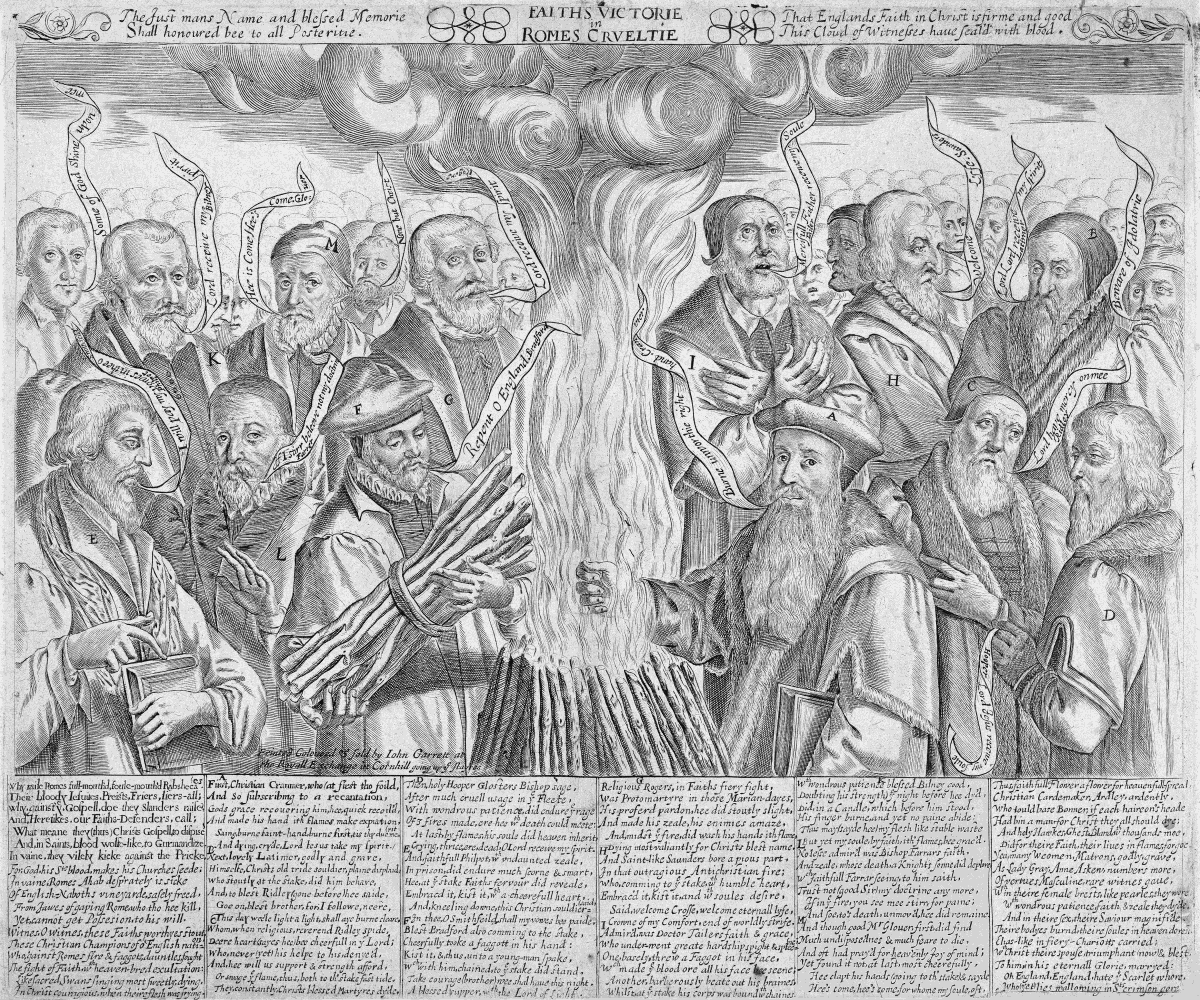2017-09-17, update: 2024-05-01
Category: British Museum
Religion and Liberty
Knight Letter № 100
In July 2018, the members of the LCSNA (Lewis Carroll Society of North America) received the 100th Knight Letter.
Also in this issue, Goetz Kluge makes the case that a seventeenth-century engraving may have influenced Henry Holiday’s last illustration for The Hunting of the Snark. Goetz’s excellent blog about all things Snark is at http://snrk.de/
Preface to the Knight Letter № 100, LCSNA, 2018
On pages 55~56 you find a few lines which I wrote about the Baker and Thomas Cranmer in The Hunting of the Snark.
There also is an accompanying web page.
 In the end, the Baker met the Boojum. As an allusion to Thomas Cranmer, the hero in Carroll’s Snark tragicomedy had been named “Baker” and also got some “hot” nicknames. Carroll went to the limits of black humor: The Baker got baked.
In the end, the Baker met the Boojum. As an allusion to Thomas Cranmer, the hero in Carroll’s Snark tragicomedy had been named “Baker” and also got some “hot” nicknames. Carroll went to the limits of black humor: The Baker got baked.
Incidentally, in parallel to my little note (p. 55~56 in the Knight Letter № 100) on the Baker’s hot names and on Henry Holiday’s pictorial reference to Thomas Cranmer’s burning, a paper «Life, Eternity and Everything, Hidden Eschatology in the Works of Lewis Carroll» suggesting textual references from The Hunting of the Snark to Thomas Cranmer’s Forty-Two Articles has been published in The Carrollian (July 2018, № 31, p.25~41), a journal of the Lewis Carroll Society in the UK. The author, Karen Gardiner, is an Anglican priest. She also addresses the objections of Revd. C.L. Dodgson (aka Lewis Carroll) against the dogma addressed by Article № 42 of Thomas Cranmer’s Forty-Two Articles.
Angus MacIntyre (1994), myself (2010, 2015, 2015), Mary Hibbs (2017), as well as Karen Gardiner (2018), we all suggested independently from each other that there are such references to Thomas Cranmer and his Forty-Two Articles (the Baker’s forty-two boxes). We arrived there coming from different starting points and different backgrounds. As for me, I initially just looked for Lewis Carroll’s (C.L. Dodgson’s) textual references as guidance for finding pictorial references in Henry Holiday’s illustrations.
(MG064)
PS: A friend told me that the caterpillar (here without hookah) on the front page of the 100th Knight Letter is a Hickory Horned Devil.
2018-07-28, update: 2023-07-07
The Vanishing
Image based on an illustration by Henry Holiday and a page of the British Museum:
Almost four months before Lewis Carroll’s The Hunting of the Snark was officially published on the 1st of April 1876, the illustrator Henry Holiday still thought of that ballad as a “tragedy“. In the end, the collaboration between the author and the illustrator yielded a tragicomedy. The sad end still is there, albeit very well hidden from child readers: The burning of Thomas Cranmer.
Nonsense literature like Carroll’s can be read repeatedly. Carroll’s nonsense is crossover literature. At different ages you would read the Snark tragicomedy differently. Likewise, you would look at Henry Holiday’s illustrations differently. Carroll wrote his Snark tragicomedy in a way which protects the young reader from understanding the sad end of the final “fit” The Vanishing too early.
2021-09-02, updated: 2022-02-28
The Image Breakers

- [left]: The Banker after his encounter with the Bandersnatch, depicted in Henry Holiday’s illustration (woodcut by Joseph Swain) to the chapter The Banker’s Fate in Lewis Carroll’s The Hunting of the Snark.
- [right]: a slightly horizontally compressed rendering of The Imagebreakers (1566-1568, aka Allegory of Iconoclasm), an etching by Marcus Gheeraerts the Elder.





